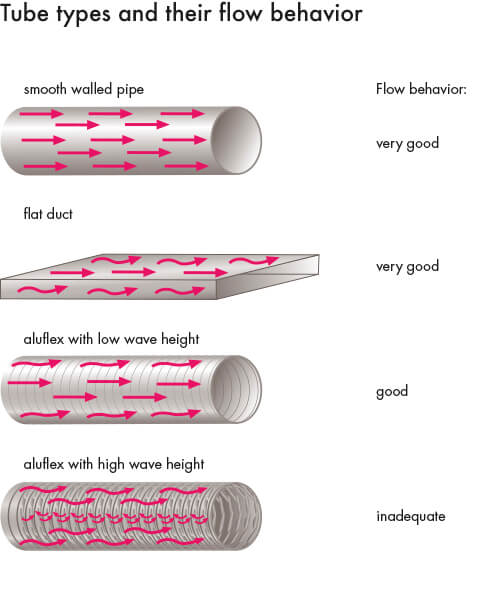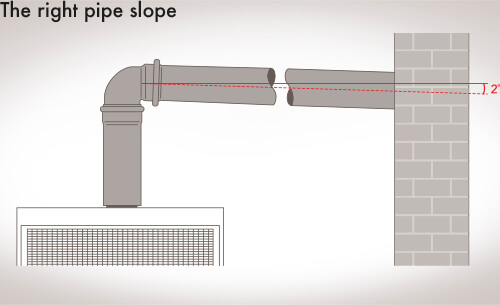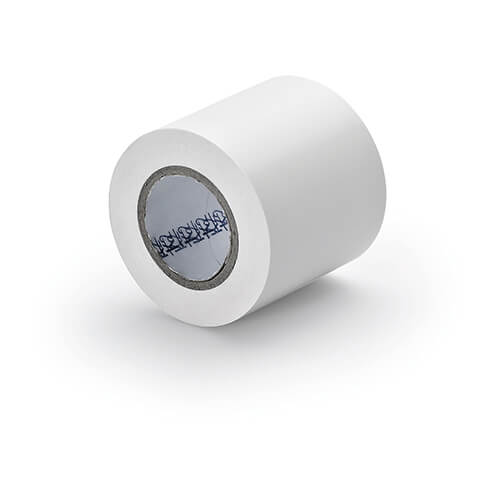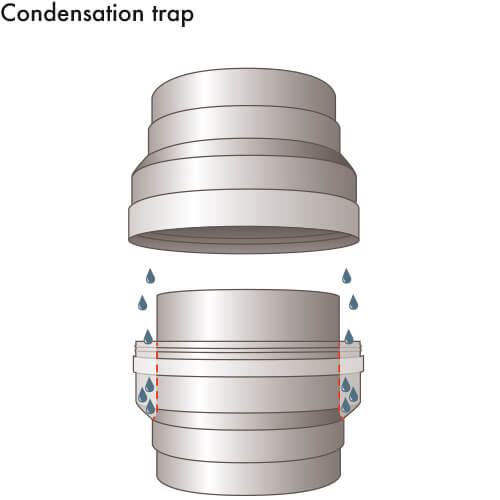Perfect duct assembly
Promising kitchen ventilation systems!

The performance of the extractor system depends decisively on the correct installation of the appropriate components. With our tips you ensure the correct function and full performance as well as the satisfaction of your customers.

Mount ducts as short as possible
Every additional metre of pipe and every bend increases the turbulence and creates pressure losses.
The right material in optimal dimensions
Smooth-walled air ducts provide the least resistance to the flowing air. Whether made of plastic or metal, with COMPAIR® from Naber you are always on track. Avoid cross-section reductions and bends that are too tight.


The right mounting height
The specifications of the hood manufacturer are decisive. Vertical hoods can be installed lower than wall and island hoods. When cooking with gas, the minimum distance to the hob is 65 cm. Induction hobs generate less heat. To capture the rising vapours properly, the hood should overlap the hob to the left and right.
Gradient to the outside
Horizontal ducts leading to the outside should have a gradient of two percent towards the wall outlet to remove condensation. That’s two centimetres per metre.
With the COMPAIR PRIME flow® wall conduct set and other components of the system, installation is extremely simple: air ducts and moulded parts are simply connected using universal connectors. Thanks to the integrated double lip seals and the flex zone of the universal connector, (pre-)installation is extremely simple, extremely innovative and extremely flexible. This significantly reduces the installation time.


Taping joints
Naber COMPAIR® plastic ducts are practically airtight in themselves. So that it stays that way, e.g. in case of a butt joint, it is recommended to tape the joint with a suitable adhesive tape. Naber COMPAIR STEEL flow® metal ducts meet the high requirements of air-tightness class C according to DIN EN 12237 even without taping.
Sound insulation
To avoid structure-borne noise, the air duct installation should be laid on a suitable sound insulating material. For example, felt or foam fleece. (The seals of the Naber COMPAIR STEEL flow® metal ducts already provide this sound isolation.)


Condensation trap
If the exhaust air piping runs vertically through unheated zones in the house, for example through an unheated roof space, a condensation trap needs to be installed vertically and as close as possible to the transition to this zone to prevent the backflow of condensation.